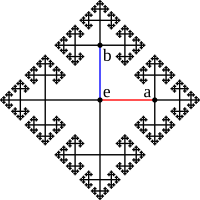
Photo from wikipedia
Abstract Let G be a finite group, and let cs ( G ) denote the set of sizes of the conjugacy classes of G. The prime graph built on cs… Click to show full abstract
Abstract Let G be a finite group, and let cs ( G ) denote the set of sizes of the conjugacy classes of G. The prime graph built on cs ( G ) , that we denote by Δ ( G ) , is the (simple undirected) graph whose vertices are the prime divisors of the numbers in cs ( G ) , and two distinct vertices p, q are adjacent if and only if pq divides some number in cs ( G ) . A rephrasing of the main theorem in [8] is that the complement Δ ‾ ( G ) of the graph Δ ( G ) does not contain any cycle of length 3. In this paper we generalize this result, showing that Δ ‾ ( G ) does not contain any cycle of odd length, i.e., it is a bipartite graph. In other words, the vertex set V ( G ) of Δ ( G ) is covered by two subsets, each inducing a complete subgraph (a clique). As an immediate consequence, setting ω ( G ) to be the maximum size of a clique in Δ ( G ) , the inequality | V ( G ) | ≤ 2 ω ( G ) holds for every finite group G.
Journal Title: Journal of Algebra
Year Published: 2020
Link to full text (if available)
Share on Social Media: Sign Up to like & get
recommendations!